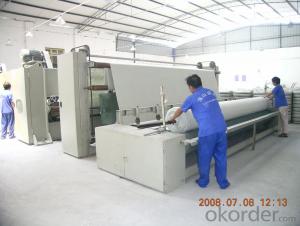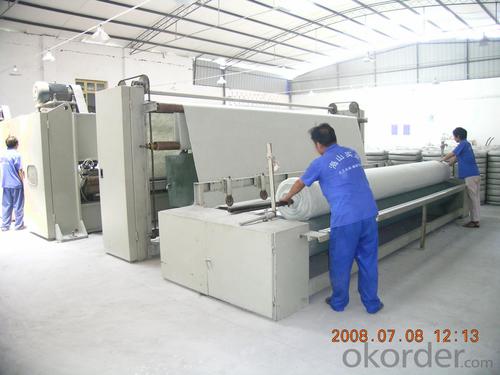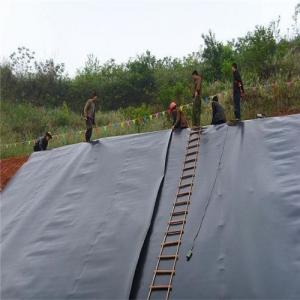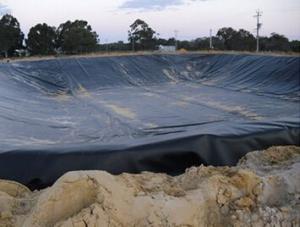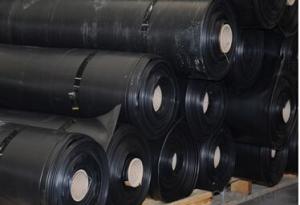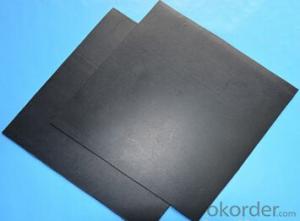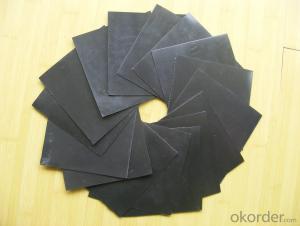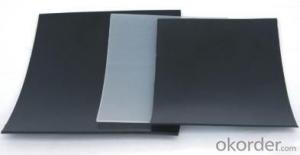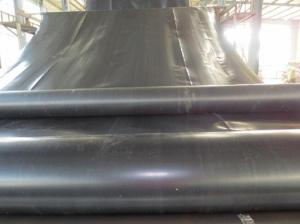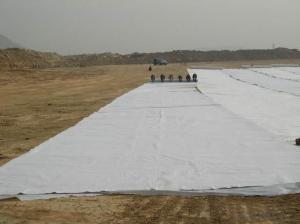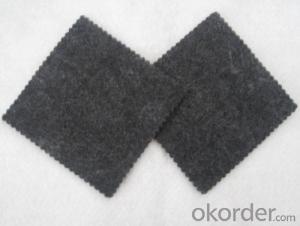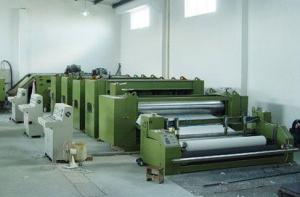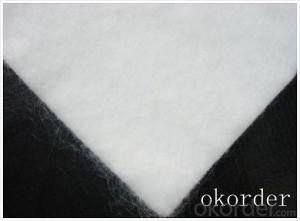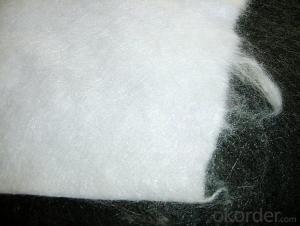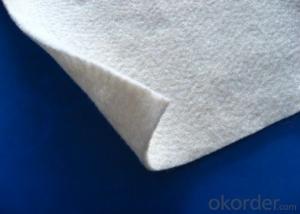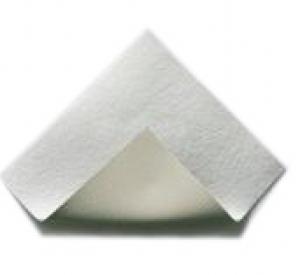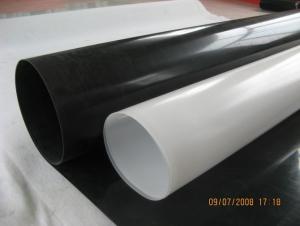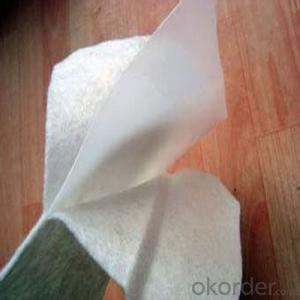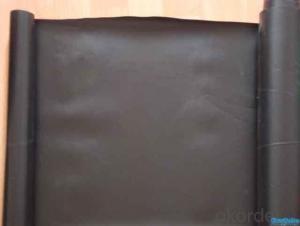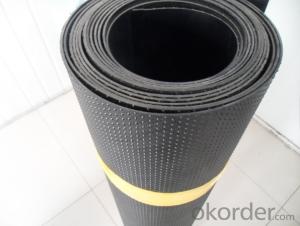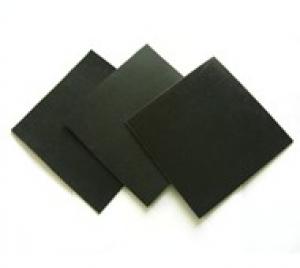300gsm Geotextiles Nonwoven Fabrics for Road Construction - Geomembrana Para Que Sirve
- Loading Port:
- Qingdao
- Payment Terms:
- TT OR LC
- Min Order Qty:
- 10000 m²
- Supply Capability:
- 500000 m²/month
OKorder Service Pledge
OKorder Financial Service
You Might Also Like
Structure of 300Gsm Geotextiles Non-Woven Fabrics Description:
The raw materials are polypropylene or polyester fiber and so on which can not be eaten by moth or oxidation.
The nets hole is not easy to jam---because the net structure is made of generalized fiberous tissue that has adaptability and moveability.
Main Features of 300Gsm Geotextiles Non-Woven Fabrics:
1. excellent air permeability and water permeability to resist the soil erosion effectively
2. a better specification to guide the water and gas to discharge from the soil.
3. a high tensile strength and non-deformability to strengthen the stability of building structure and improve the soil quality.
4. effectively focus on the diffusion, transfer and decomposition and prevent the soil damage.
5. to prevent the lower sand, soil and concrete from mixing.
6. make construction be simple---light weight, easy to use, simple construction.
7. acid and alkali resistant, no corrosion
Geotextiles Non-Woven Fabrics Images
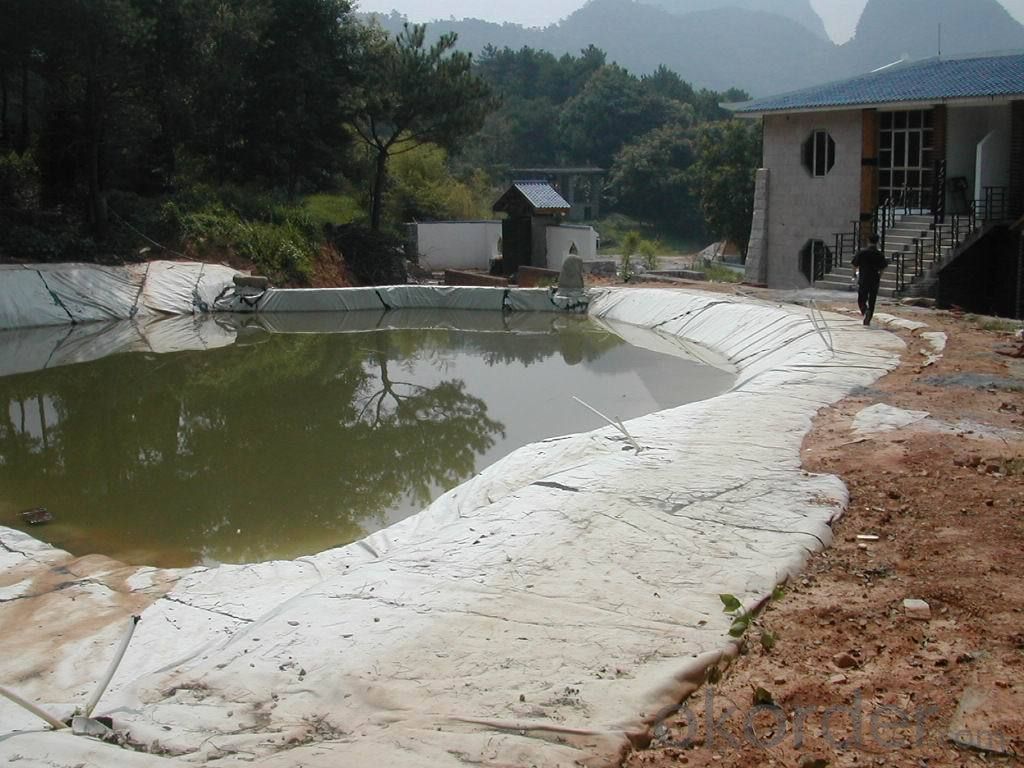
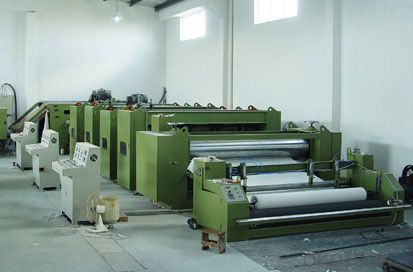
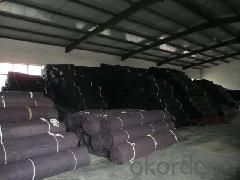
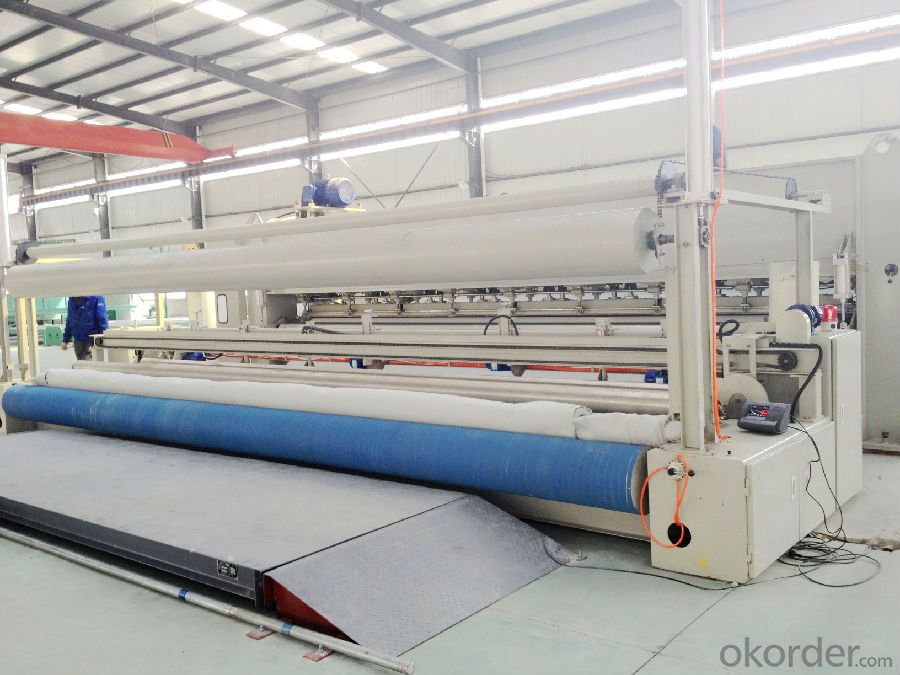
Geotextiles Non-Woven Fabrics Specification:
Project Model | 100 | 150 | 200 | 250 | 300 | 350 | 400 | 450 | 500 | 600 | 800 | Remarks | |||||||
Weight difference on unit area ,% | -8 | -8 | -8 | -8 | -7 | -7 | -7 | -7 | -6 | -6 | -6 | ||||||||
Thickness,mm >= | 0.9 | 1.3 | 1.7 | 2.1 | 2.4 | 3.5 | 4.2 | 5.3 | 7.6 | 10.0 | 14.2 | ||||||||
Width deviation,% | -0.5 | ||||||||||||||||||
Breaking strength,KN/m >= | 2.5 | 4.5 | 6.5 | 8.0 | 9.5 | 11.0 | 12.5 | 14.0 | 16.0 | 19.0 | 25.0 | Longitudinal Transverse | |||||||
Elongation at break,% | 25~100 | ||||||||||||||||||
CBR-test,KN >= | 0.3 | 0.6 | 0.9 | 1.2 | 1.5 | 1.8 | 2.1 | 2.4 | 2.7 | 3.2 | 4.0 | ||||||||
Equivalent opening size (EOS) O90,mm | 0.07~0.2 | ||||||||||||||||||
Coefficient of vertical permeability. cm/s | K×(10-1~10-3) | ||||||||||||||||||
Tearing strength,KN >= | 0.08 | 0.12 | 0.16 | 0.20 | 0.24 | 0.28 | 0.33 | 0.38 | 0.42 | 0.46 | 0.60 | Longitudinal Transverse | |||||||
FAQ
We have organized several common questions for our clients,may help you sincerely:
Q1: How about your company?
A1:Our company are one of the largest geosynthetic products supplier in the world.We have the products experience more than 20 years.Already export to USA/Germeny/Australia/Zambia/Brazil etc.more than 20 countries.Almost 10years.Our products including Geocell/Fiberglass Geogrid/Geomembrane/Geotextile/Geonet etc.
Q2:Can you send samples to us ?
A2:Yes , free samples could be provided , but customer need pay for the freight cost .
After order placed , the freight charge could be refund .
Q3:What’s your Payment term ?
A3:T/T , L/C , Western Union,Paypal ...
Q4:What’s your manufacture process time ?
A4:Usually within 20 days
- Q: What is the soft membrane?
- Soft membrane ceiling, known as flexible ceiling, tensile membrane ceiling and punt ceiling, is produced in France and is a high-grade green decoration material. Variety of texture and color provide you with elegant design inspiration, making it a special indoor decorative spotlight. Weighing about 180-320 grams per square meter. Because of its good flexibility and can be freely designed for a variety of modeling and used for winding corridor, open viewing space and various occasions, all without exception. Soft membrane ceiling has become the preferred material for suspended ceiling materials. Soft membrane is made of special polyvinyl chloride ethylene material, 0.18 - 0.2 mm,weigning 180 ~ 320 g per square meter, and its fire prevention level is B1 level. Soft membrane is shaped by one or more cutting and finished by high frequency welding. Soft membrane is made in the factory after measuring the size of ceiling. Stability of membrane size is similar to soft rolls at - 15 degrees to 45 degrees, looks good in three-dimensional effect, but more difficult to take care of, what'r more, the cost is relatively high. Advantages of soft membrane ceiling: Casual style with a variety of colors, mould proof, bacteria resistance, anti aging; good insulation and waterproof function; sound and heat insulation, save energy costs for cooling and heating ; free from dust and smoke; non-toxic, tasteless, environmental safety, convenient installation and disassembly. Disadvantages: Difficult to clean up. Soft membrane ceiling has different prices, but it depends on the style and craftsmanship, some cost hundres and some cost dozens RMB.
- Q: Can geomembranes be used in gas containment systems?
- Yes, geomembranes can be used in gas containment systems. They are an effective barrier that can prevent the escape or leakage of gases, providing a reliable and durable solution for containing gases in various industries such as landfill sites, industrial plants, and storage facilities.
- Q: What are the challenges of installing geomembranes in remote locations?
- One of the main challenges of installing geomembranes in remote locations is the logistical difficulty. Transporting heavy machinery, materials, and equipment to these areas can be costly and time-consuming. Additionally, the lack of infrastructure and limited accessibility in remote locations can pose challenges in terms of setting up the necessary equipment and ensuring a smooth installation process. The availability of skilled labor and technical expertise may also be limited, making it harder to find qualified professionals to carry out the installation. Finally, remote locations often have harsh weather conditions, such as extreme temperatures or heavy rainfall, which can further complicate the installation process and require additional precautions to ensure the geomembranes are properly installed and maintained.
- Q: What is the seepage-proof geomembrane?
- Co-extrusion technology is used during the production, the main material of it is high density polyethylene native resin with high quality. It has a low hydraulic permeability and excellent seepage-proof performance. The standard name of HDPE seepage-proof membrane is polyethylene geomembrane, which has a highly efficient molecular density.
- Q: Can geomembranes be used for landfill leachate collection systems?
- Yes, geomembranes can be used for landfill leachate collection systems. Geomembranes are impermeable liners that can effectively contain and prevent the leakage of leachate, a liquid that is generated from the decomposition of waste in landfills. These liners are made of materials like high-density polyethylene (HDPE) or polyvinyl chloride (PVC) and are installed as a barrier between the waste and the underlying soil to collect and redirect leachate to a collection system for proper treatment and disposal. Geomembranes provide a reliable and cost-effective solution for managing landfill leachate.
- Q: What are the advantages of using geomembranes in wastewater containment?
- There are several advantages of using geomembranes in wastewater containment. Firstly, geomembranes provide a strong and impermeable barrier, preventing any leakage or seepage of wastewater into the surrounding environment. This helps in protecting groundwater sources and preventing contamination of nearby water bodies. Secondly, geomembranes are highly durable and have a long lifespan, ensuring the longevity of the containment system and reducing the need for frequent repairs or replacements. Additionally, geomembranes are flexible and can be easily installed and customized to fit different shapes and sizes of containment areas, making them a versatile solution for wastewater management. Lastly, geomembranes are resistant to chemicals and UV degradation, ensuring the integrity of the containment system even in harsh environmental conditions. Overall, using geomembranes in wastewater containment provides a cost-effective and environmentally friendly solution for safely storing and managing wastewater.
- Q: What is the geomembrane material?
- Function: anti-seepage, isolation Product use: geotechnical dam, rockfill dam, masonry dam and pressure concrete dam; dike, dam front level anti-seepage cover, vertical foundation impervious layer; tailings dam, Roads, highways, railway subgrade; roadbed and other ground salt control; expansive soils; roadbeds, reservoirs (pit, kangang); waste land; subway, basement and tunnel, tunnel seepage lining; And waterproof layer of collapsible loess; roof leakage.
- Q: What are the considerations for geomembrane selection in hazardous waste containment?
- When selecting a geomembrane for hazardous waste containment, several considerations need to be taken into account. Firstly, the geomembrane material should be chemically resistant to the specific hazardous waste it will be in contact with, ensuring that it does not degrade or allow any leakage. Additionally, the geomembrane should have high tensile strength and puncture resistance to withstand any potential mechanical stress or damage. It is also crucial to consider the durability and longevity of the geomembrane, as hazardous waste containment facilities are expected to operate for an extended period. The installation and maintenance requirements, as well as the cost-effectiveness of the chosen geomembrane, should also be considered. Ultimately, the selection should meet regulatory standards and provide the necessary level of protection for both human health and the environment.
- Q: Is electrothermal film of pringitng ink good?
- The electric heating film is an electric heating element which directly converts electric energy into heat energy. As with electric heating tube, electric heating rod, electric heating plate, electric heater, electric cooker and induction cooker, the electric heating is a part of the electro-thermal products.But the difference is that the electric heating film is a relatively new product category in China and it has only be used for 10 years.
- Q: Can geomembranes be used for landfill capping systems?
- Yes, geomembranes can be used for landfill capping systems. Geomembranes are often used as a barrier to prevent the escape of contaminants and the infiltration of rainwater into landfills. They provide a protective layer over the waste to minimize environmental impact and ensure safe disposal.
Send your message to us
300gsm Geotextiles Nonwoven Fabrics for Road Construction - Geomembrana Para Que Sirve
- Loading Port:
- Qingdao
- Payment Terms:
- TT OR LC
- Min Order Qty:
- 10000 m²
- Supply Capability:
- 500000 m²/month
OKorder Service Pledge
OKorder Financial Service
Similar products
Hot products
Hot Searches
Related keywords
